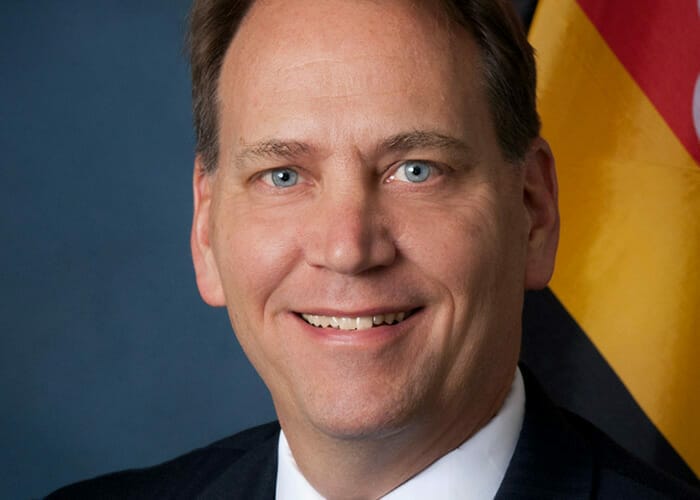One year into his chief investment officer role at Baltimore-based Maryland State Retirement and Pension System, Andrew Palmer is steering the $45 billion portfolio in new directions.
He’s overseen a doubling in the fund’s exposure to emerging markets and a move to a long duration benchmark in the fixed income portfolio.
“Fixed income gained from switching from an intermediate benchmark to a long duration benchmark with average maturities of 25 years. The Barclays Aggregate index wasn’t doing much for us. We broke it apart and took what attributes we wanted.”
Now he promises to apply a similar “thought process” across the entire portfolio.
One area Palmer is particularly focused on is the absolute return portfolio, accounting for around 10 per cent of fund assets, which returned 0.7 per cent in fiscal 2015 compared to a benchmark of 2.7 per cent.
“We still want part of our portfolio to have a low correlation to stocks and the absolute return allocation is dedicated to that for us. However, the allocation hasn’t provided strong returns or diversification recently,” he says.
He believes Maryland’s hedge fund allocation performs more like the stock market in down markets than up markets, and may not be diversified enough.
“I want to make sure we have the right mix of managers. We have multiple managers and many of them are doing the same thing. We are seeing different returns but they are correlated; we want uncorrelated returns.”
The portfolio consists of four global macro funds, one risk parity strategy, two fund-of-funds, five relative value multi-strategy funds, and one insurance fund.
“The insurance fund is the one that gives the best uncorrelated returns,” he observes.
Poised to reduce manager numbers
Other areas of the manager roster are also poised for change. The fund currently uses around 350 external managers in a strategy that is entirely outsourced: Maryland only employs 15 investment professionals of its own, most of who are involved in sourcing and monitoring external managers.
The fund has committed around 6 per cent of assets to an emerging manager program that includes 100 managers favoured for their independent, original and diversifying strategies. Now Palmer plans to reduce the number of managers, although the size of the portfolio will stay the same.
“We work through consultants, but consultants tend to stick with tried and tested managers. We like these aggressive, bright minds but we are working to reduce the number of managers here – not because they are doing poorly but because we have so many that together they perform like an index.”
Emerging managers are particularly focused on the fund’s active allocations around stock and bond picking, as well as quants. He would also like to build internal expertise.
“Where we can have confidence, and build the skills set, we will start to do more ourselves.” The first area is likely to be around tactical asset allocation, including in-house beta allocations and using exchange traded funds or futures to change the asset mix. He also believes Maryland is well positioned to manage currency risk and fixed income allocations itself.
“I worked in fixed income for 30 years. I think this would be a natural place to start building success.”
One hundred managers sit on the private equity side, monitored by an internal staff of four.
“Our staff are managing the relationships and deciding whether to subscribe to the next fund; in private equity we are in partnerships and have no control of the investment.”
Although he says external management in private markets drives fees higher, he attributes the fund’s strongest returns in private equity and private real estate to “good managers” – as well as improving valuations.
Maryland has some 35 per cent of assets in a public equity allocation, balanced between dollar and non-dollar stocks that use a currency overlay program to hedge risk.
“It’s expensive to hedge currencies back all the time and our currency exposure is also an important source of diversification, however the overlay protects the portfolio against any sustained currency trends.”
The dynamic strategy adjusts according to currency market conditions, with managers tending to use low hedge ratios when the dollar is weak, and high hedge ratios when the dollar is strong. Maryland doesn’t hedge emerging market currencies.
“We like these currencies long-term; they are growth drivers across the globe.”
Blockchain technology
Going forward, Palmer believes emerging markets will offer better value than they have and he is also looking at new asset classes that have appeared since the banking crisis like mortgages, and commercial real estate mortgages.
“We can start to invest in areas where traditional owners can no longer invest as much,” he says.
He also believes it won’t be long until blockchain technology, the shared database technology that allows consumers and suppliers to connect directly removing the need for middlemen, will broaden the potential investment universe to include more easily accessible opportunities in assets like leveraged loans, securitised loans and asset-backed loans.
“These assets don’t tend to trade as well as others and block chain technology could make it easier,” he says. They would also offer the kind of diversification he views as paramount.
“We like the fact that returns vary across the portfolio; the balance gives us a smoother ride. When everything moves in the same direction at once it may put pressure on the system in falling markets,” he says.



